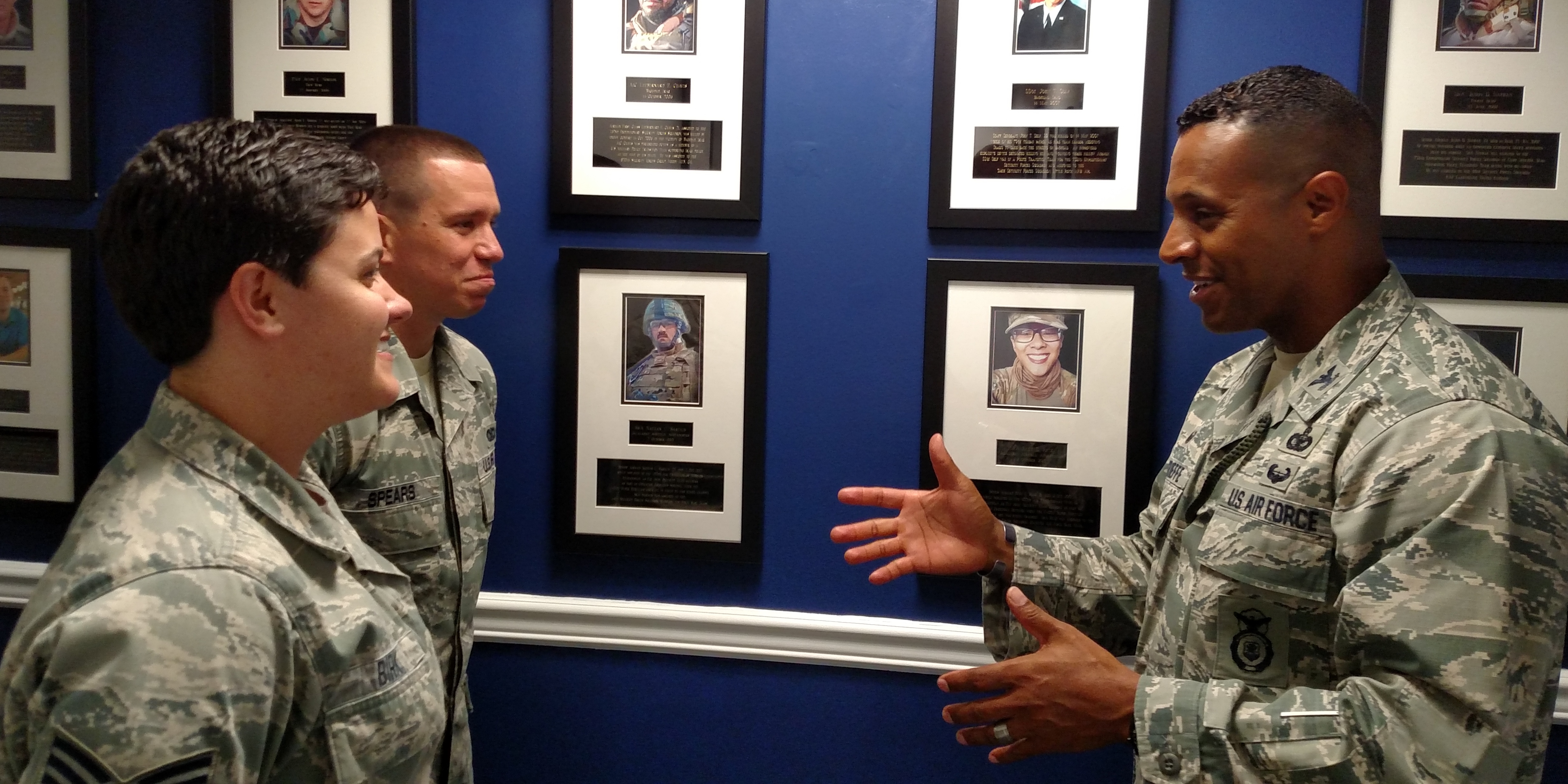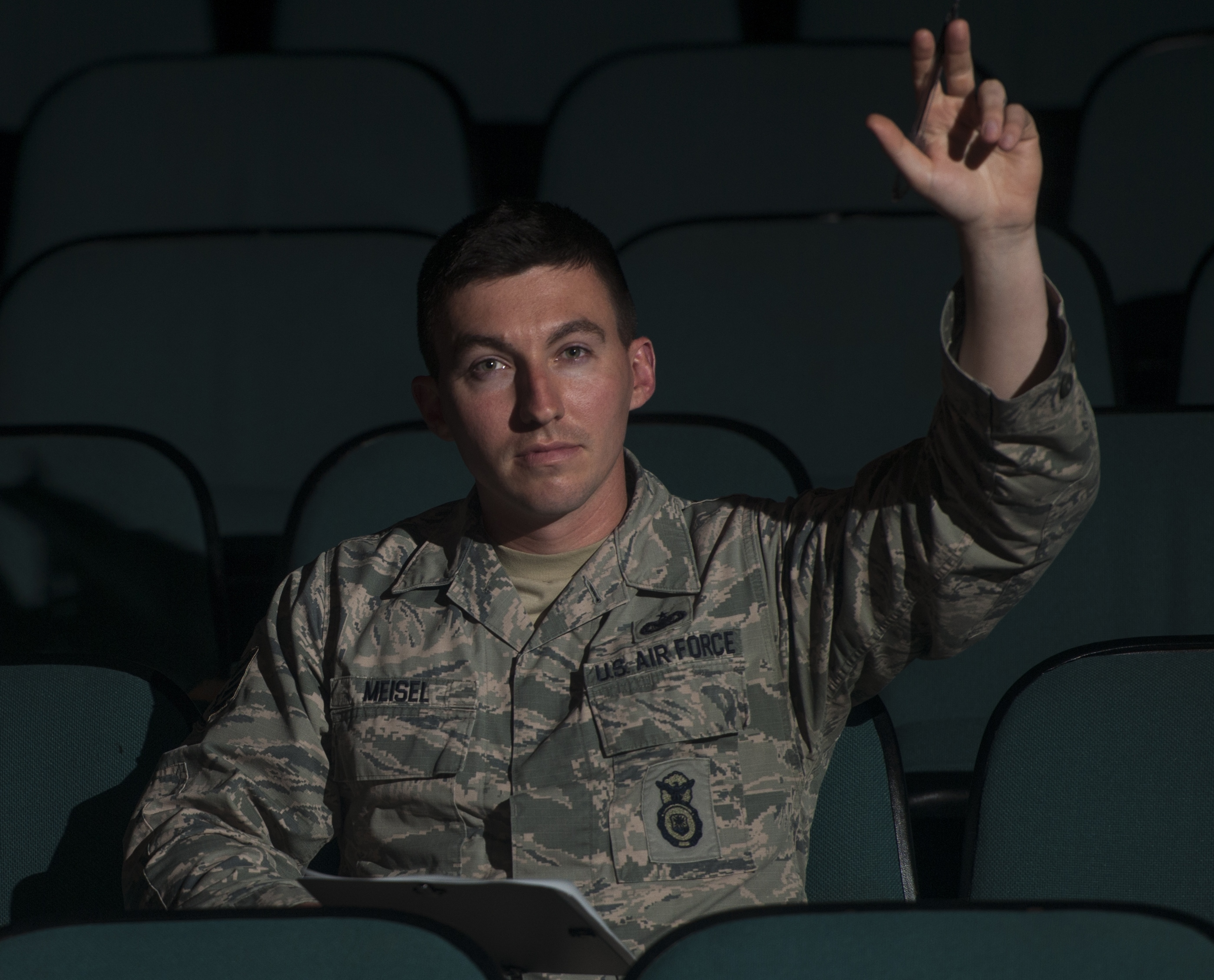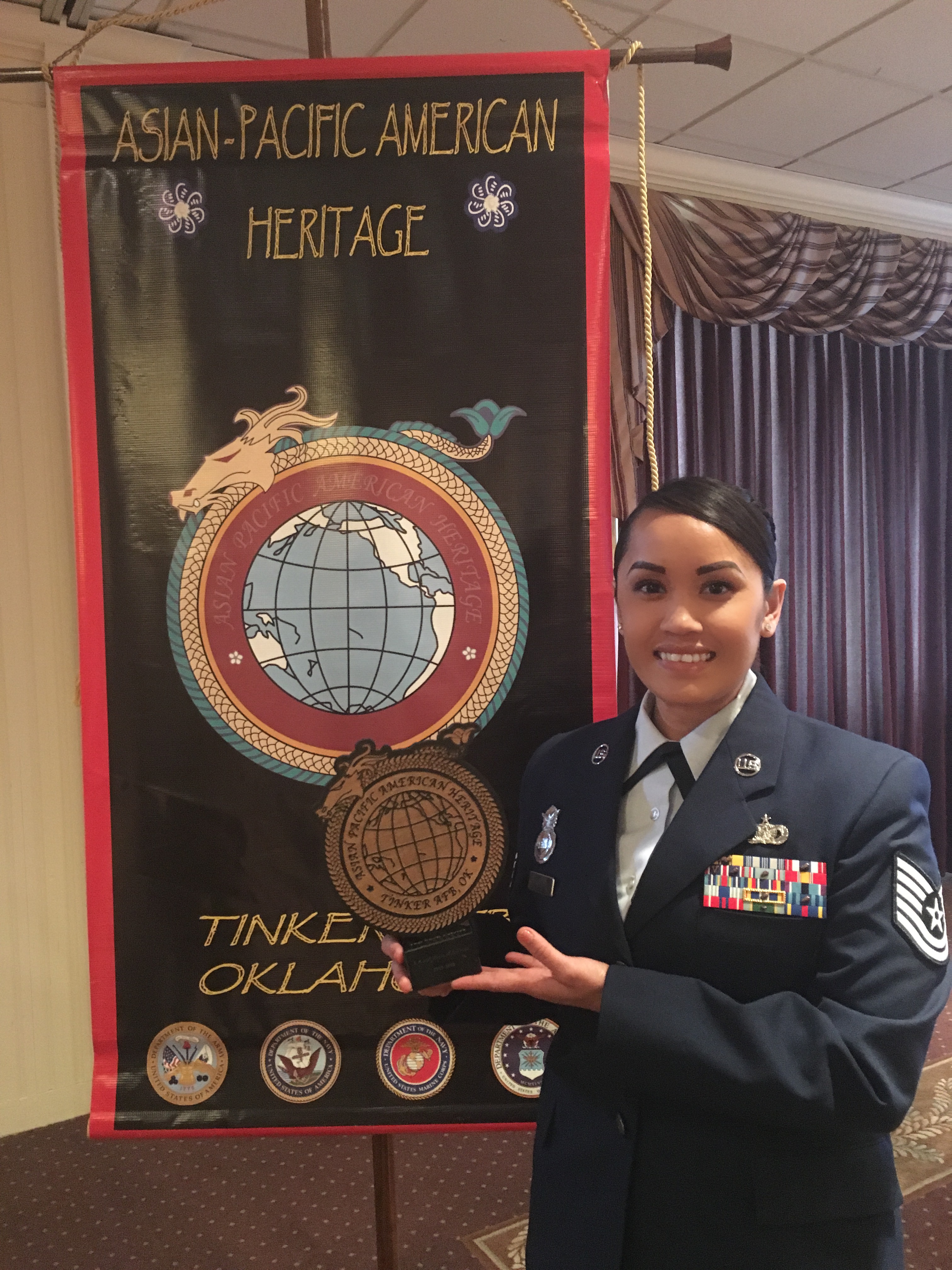Command: No Greater Honor
Official Web Site of Joint Base Andrews
Commentary by Colonel Victor Moncrieffe
11th Security Forces Group, Commander

5/26/2016 - JOINT BASE ANDREWS, Md. -- Since commissioning I have desired to lead Airmen. I believe, commanding Airmen is the greatest honor any commissioned officer can achieve. The privilege and honor of being responsible for the successes and failures of American patriots serving something bigger than themselves, in the noblest occupation known to man, is unprecedented. That said, the mission of defending our nation is job number one. It is the primary reason we serve and develop the weapon systems we do, and by doing so, continue to uphold the principles which make our great country free. But as a leader, once you realize that your Airmen are the ultimate weapon system and that developing, caring and trusting the Airmen you serve equates to mission success, your focus becomes very clear. Take care of your Airmen and they will take care of the mission.
In my 22 years of donning the uniform of our country, the Airmen I have served never cease to amaze me. Regardless of the environment, lack of resources or the dangers associated with the mission, when asked, our Airmen will always perform to the best of their abilities. I know this because I have had the pleasure of seeing this first hand. As a lieutenant, on the plains of Montana, my Airmen did the ominous job of ensuring the deterrent was safe, secure and reliable in some of the most austere environments. As a major, I witnessed Airmen strive to make their dreams of becoming cadets at the U.S. Air Force Academy come true by enduring the academic and physical rigors associated with acceptance to this institution. In the deserts of Iraq, I thought of my Airmen daily as they left the safety of the installation responding to reports of improvised explosive devices and searched for weapons caches outside the wire. And, even here at America's Airfield as a full colonel, I've seen Airmen execute numerous National Special Security Events, an air show and other no-fail missions with precision and the utmost professionalism. Despite the many reasons and circumstances that bring people from diverse backgrounds into our Air Force, when our nation calls our Airmen will always answer.
As I conclude my leadership tour and contemplate that this may be the last time I hold the title of "commander", I am both grateful and humbled to a nation and an Air Force that granted me the wonderful opportunity on multiple occasions to lead Airmen. I can recall the promotions, awards, disappointments and both personal and professional accomplishments that my Airmen have attained and I am thankful just to have been a small part of their experience. As I think of my own successes I have had throughout my career, each one can be traced back to the hard work and sacrifices of those I led and served...the American Airmen. Even after more than 25 years of continued operations overseas and with constrained resources, our Airmen are making the impossible possible every day because failure is not in their creed. And as the torch of leadership is passed on from my generation to the next, I am encouraged by the fact that those officer and enlisted leaders coming after me will be more than prepared to take our Air Force to even greater heights because they care about their families, our nation, our Air Force, and fellow Airman.
So to you... future leader... commander..., know that there is no greater honor than leading Airmen. Use your rank and position to develop your Airmen, execute the mission and leave the institution better than you found it. Command is a sacred responsibility that our Air Force has entrusted to you that can never be taken lightly nor should it be squandered. Live up to your responsibilities as a leader, rely on your moral compass to stay grounded and stay true to our core values. If you do these three simple things your Airmen will fly, fight and ultimately... win!
Grand Forks Air Force canines 'love' job helping base, local police
The Bismark Tribune, Becky Jacobs Forum News Service, Jun 9, 2016

Forum News Service
Arco, a seven-year-old Belgian Malinois, watches her handler Staff Sergeant Victoria Dames while she searches Kennel Master Matthew Byrnes during training.
GRAND FORKS -- Tech Sgt. Matthew Byrnes took off his protective jacket and held out his arms, looking at the teeth-shaped marks and discolorations on his skin.
But that's just part of his job as kennel master of the Grand Forks Air Force Base 319th Security Forces Squadron K-9 section, he said.
The unit has nine dogs, training and working every day with their handlers. Part of their duties include patrolling the base and its perimeter to keep people from getting any ideas of jumping the fence. The dogs might be searching buildings and cars to make sure everything is in order with military police. Or they could be called out of the base to nearby cities in emergency situations.
"If it requires K-9, most of the time that's bomb threats," said Staff Sgt. Victoria Dames, a working dog handler. "So, if the schools get bomb threats or the buildings get bomb threats downtown, we are the K-9 for what's closest for us."
Dames and her Belgian Malinois, Arco, were called in to the bomb threats that were determined to be hoaxes at Century Elementary School on May 23 and at Red River High School a few days later.
The base has a good working relationship with Grand Forks and UND police in addition to other law enforcement agencies in the area with whom they have working agreements, Byrnes said.
"We provide the specialty because it's something that we have a lot of experience in when it comes to explosives," Byrnes said. "If there's a bomb threat downtown, we basically deal with that stuff more frequently than the local law enforcement may."
And there's expertise police have that they can help the base with, too.
"We need their assistance maybe with more drug interdiction type stuff," Byrnes said. "Not that we can't handle it ourselves, but they do a lot more of it and they have a hot commodity of it, so it's something we share."
'Nice bite'
After walking through a kennel of barking dogs, Dames took 7-year-old Arco on a leash outside Wednesday to go through a practice course. The two work together every day, and part of that is going through these drills.
Arco ran over a beam, leapt through a wooden stand and practiced chasing down a suspect. Meanwhile, Byrnes strapped on a thick, black protective jacket and started waving his arms around as he ran away from Arco. Dames shouted a command, and that's when Arco took off running after Byrnes.
But at the last second, Dames ordered Arco to stop, and Arco sat with his tongue out, staring up at Byrnes.
Later, Dames ordered Arco to latch onto Byrnes. Arco doesn't have all of his canines, but "he still has a nice bite," Byrnes said after Arco let go. The dog uses his back teeth to make sure he's on and won't slip off if a person moves around, Byrnes explained.
The dogs are trained as puppies in Texas before coming to Grand Forks and other bases. And just like the dogs, Dames had to go through months long training to be a handler.
But eventually the dogs retire, just like the airmen do. It depends on the dog, but most work in the unit for 10 to 12 years, Byrnes said. Next week, Ferra is retiring from the Air Force at 10 years old, and there will be a ceremony complete with a dog bed and steak for Ferra.
"They put in just as much work as we do," Byrnes said.
After she retires, she's living on a farm to have relaxing life, he said.
"It's just like us when we stop and go back to civilian life," Byrnes said.
Dog people
Byrnes and Dames have been at Grand Forks Air Force Base with the dog unit for about three years, but both of them didn't originally plan on it.
"I didn't even know the military had it when I came in," Byrnes said. "As soon as I could do it, I put in for it."
And while Dames loves working with Arco now, she wasn't always a dog person. Dames was stationed in England when she found out about the program.
"They wanted a new program where they were starting to filter in younger airmen into the K-9 program," Dames said.
She went through the selection process and was chosen to go through a three-month training program. But at the time, she said just seeing a dog's saliva made her nauseous.
"Personally, I didn't really care for dogs too much. I was definitely a cat person before I went K-9," Dames said with a laugh. "And now I just I love it."
She's built a relationship with Arco and taught him some extra tricks, such as weaving through her legs like a basketball player might dribble a basketball between his legs as he walks.
Dames has different methods on how to reward Arco for a job well done. When she pulled a plastic blue ball from the front right pocket of her uniform, Arco didn't take his eyes off it, watching its every move.
The dogs have an important job, but they are still dogs at heart, enjoying the ups and downs of the jobs like the airmen do.
"(The dogs) love what they do," Byrnes said.
Defender, Wingman, Scholar
by Airman Gabrielle Spalding, 11th Wing Public Affairs
Tech. Sgt. Collin Meisel, 811th Security Forces Squadron operations non-commissioned officer, poses for a portrait at Joint Base Andrews, Md., May 11, 2016. After being accepted to Georgetown University’s McCourt School of Public Policy, Meisel was awarded the McCourt Scholars scholarship, which includes full tuition, health insurance and a $10,000 stipend. (U.S. Air Force photo by Airman Gabrielle Spalding)
6/1/2016 - JOINT BASE ANDREWS, Md. -- Applying to a university can seem daunting without the right support. For Tech. Sgt. Collin Meisel, 811th Security Forces Squadron operations non-commissioned officer here, the encouragement from his peers, as well as the leadership prowess he gained while serving in the Air Force, has helped him appreciate being awarded the McCourt Scholars scholarship to Georgetown University's McCourt School of Public Policy.
"Being offered the fellowship completely blew me away," Meisel said. "I feel honored.
" Meisel will be attending McCourt August of 2016 to obtain his Master of Public Policy.
Georgetown, which is home to MSPP and eight other schools, is a prestigious university and is accredited by the Middle States Commission on Higher Education.
McCourt welcomes students with a variety of professional backgrounds, including working in the military.
Each year, five in-coming scholars are nominated by a committee, based on the clout of their applications to MSPP and a phone interview, according to the Georgetown website.
Of the five universities he applied to, Georgetown was Meisel's first choice, and to his surprise, the first to accept him.
"Georgetown was a longshot," Meisel said. "I didn't even expect to get in."
Shortly after being accepted to GU, and the interview for the fellowship, he received a phone call.
"It was really exciting," Meisel said. "Especially because I was hauling a bunch of pallets. It wasn't an exciting day at all, so to get that news was pretty sweet."
Meisel had an opportunity to meet one of the professors on the committee who remembered voting for him, and told Meisel that his leadership experience was unmatched due to his frequent travel with the executive aircraft security section at Andrews as a team leader.
Capt. David Nugent, 811th SFS operations officer, who has known Meisel for three years, has experienced firsthand the leadership capabilities of the OPS NCO.
"Meisel is an outstanding leader and critical thinker," Nugent said. "He was responsible for tasking teams of SF members to protect executive aircraft overseas. It was a difficult job to coordinate with so many different agencies, but he always excelled."
Nugent also provided support for Meisel during his application process to GU.
"I had to write two essays as part of the application process," said Meisel. "Nugent reviewed them and also wrote a letter of recommendation. He was a huge mentor and helped me think it was possible.
" Having the mentorship from peers and gaining leadership while in the Air Force, Meisel can aim high for academic mastership.
Each year, the Tinker Air Force Base Asian Pacific-American Heritage (APAH) Committee honors individuals of any ethnicity backgrounds who directly or indirectly promoted the Air Force values and have made significant contributions to the Air Force, Tinker AFB, and/or the APAH community.
This year TSgt Nicole A. Cabrera a AFSFA and Oklahoma Heartland Chapter member earned the Tinker AFB Asian-Pacific American Heritage Award (E-5 and above category).
She currently works as the NCOIC of Reports and Analysis. Her section is Tinker AFB's focal point for crime trend analysis, incident reports, and traffic infractions for 94K personnel spanning 7 MAJCOMS/5 wings and 45 associate units. TSgt Cabrera manages unit personnel and information security programs for 475 assigned to the 72nd Security Forces Squadron and oversees two MICT reviews and corrected 44 discrepancies and resulting in her unit receiving a "Highly Effective" UEI rating.
Her office has processed over 200 incident reports/13.3 security clearances/1.2K citations/8 installation debarment rebuttals/and 22 citation rebuttals. During this period, she led 12 Security Forces members during a NORTHERN EDGE exercise, securing $13.5M in Airborne Warning and Control System (AWACS) aircraft, which enabled 1.94K sorties/31.2K munitions/132K cargo drops.
Additionally, she was also the Security Forces lead for 6 personnel during the CHECKERED FLAG exercise, securing $1.08M enabling 10 sorties/60 red air kills/and 63.3 combat training hours. Both exercises took place in Elmendorf AFB, Alaska.
She graduated from American Military University with a Bachelor's Degree in Child and Family Development and is currently pursuing her Master's Degree in Human Relations and has completed six credit hours with a 4.0 GPA. Additionally, she enrolled in another 15 credit hours.
TSgt Cabrera received an exceptionally well qualified score of 94% on her initial Flight Chief QC and has been trained in the Air Force Green Belt training and is an alternate Continuous Process Improvement monitor for her squadron.
She was the Air Force Assistance Fund squadron Representative/Installation Project Officer aid assisting in weekly collection of funds. The unit exceeded our goal of $6.4K and raised nearly $10K. She has also devoted 60 hours to Destiny Christian Center, assisting with school events and piloted the volunteers for 2015's Police Week, organizing 6 teams and 51 volunteers honoring 114 fallen LE officers.
Finally, she was Team Tinkers Spring 2016 Graduation Chairperson arranging a ceremony for 150 Spring Graduates/20 volunteers and requesting and coordinating the Air University's Command Chief (CMSgt Timothy Horn) as their guest speaker.
Well done TSgt Cabrera …. AFSFA is proud of you and proud to have you as a member!!
By Ollie Reed Jr. / Albuquerque Journal, Staff Writer
May 20th, 2016

Maj. Eric Judd, commander of the 377th Security Support Squadron, and members of the squadron salute Thursday during a memorial retreat ceremony for Air Force and local law enforcement officers who had died in the line of duty since the start of the war on terrorism. (Jim Thompson/Albuquerque Journal)
They died in Iraq and in Española; in Afghanistan and Albuquerque; in Germany and in Rio Rancho, Santa Fe and the Jemez Mountains.
Some were in the Air Force, special agents or security force officers. Others served with the New Mexico State Police, or with police and sheriff departments throughout this state.
But all of these 44 men and women were police officers killed in the line of duty since the global war on terrorism started more than a dozen years ago.
And on Thursday, they were all honored at a National Police Week memorial retreat ceremony hosted by Kirtland Air Force Base’s 377th Security Forces Group at the Hardin Field Parade Ground on the base.
Col. Richard DeMouy, commander of the 377th, told those gathered at Hardin Field that all of the 44, regardless of what uniform they wore, were part of the thin blue line that separates good from evil and order from chaos.
“The uniforms are different, but each leaves loved ones behind, each had stories to tell and stories that continue to be told,” DeMouy said. “And each, I suspect, could not imagine themselves doing any other job. They run toward dangerous situations others so desperately seek to flee.”
The roll call of those honored on Thursday started with Special Agent Lee Hitchcock, killed on Aug. 8, 2004, in Kirkuk, Iraq; and ended with Tech. Sgt. Joseph G. Lemm, killed on Dec. 21, 2015, at Bagram Air Field in Afghanistan.
But in between were the names of Bernalillo County sheriff’s deputy James McGrane Jr., killed on March 22, 2006, in Bernalillo County; New Mexico Motor Transportation Police officer Robert Potter, who died Aug. 16, 2012, in Vado; Rio Rancho Police Officer Gregg Anthony Benner, killed May 25, 2015, in Rio Rancho; Albuquerque Police Department Officer Daniel Scott Webster, killed Oct. 29, 2015, in Albuquerque; and many more.
Representatives of the Albuquerque, Rio Rancho, Estancia, Santa Fe and Bosque Farms police departments and the Sandia National Laboratories Protection Force attended the ceremony, which included a 21-gun salute and the playing of taps and “Amazing Grace” on a bagpipe.
“It is an honor to stand alongside so many distinguished public servants,” DeMouy said to the military men under his command and to guests attending the ceremony. “Action leads to change that makes a difference, and each of us is here to make a difference.”
Page 46 of 50



